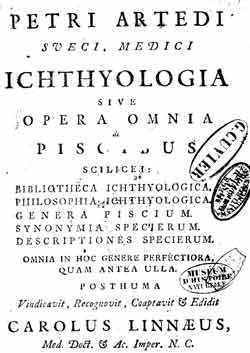|
Konstantin Alekseevich Satunin
Konstantin Alekseevich Satunin (20 May 1863–10 November 1915) was a Russian zoologist who graduated at Moscow State University in 1890. From 1893 onward, he worked at a sericulture station in the Caucasus. He was a senior specialist at the Department of Agriculture between 1907 and 1915, concentrating on applied zoology and hunting in the Caucasus. He studied the mammals of Russia and Central Asia and published many works on the fauna of the Caucasus, mainly in the field of mammalogy but also entomology, herpetology, ichthyology, ornithology, sericulture, zoogeography, game management science and fishing. For example, he gave descriptions of a Caspian tiger from Prishibinskoye.Geptner, V. G., Sludskij, A. A. (1972). ''Mlekopitajuščie Sovetskogo Soiuza.'' Vysšaia Škola, Moskva. (In Russian; English translation: Heptner, V.G., Sludskii, A. A., Komarov, A., Komorov, N.; Hoffmann, R. S. (1992)''Mammals of the Soviet Union. Vol III: Carnivores (Feloidea).''Smithsonian Institution ... [...More Info...] [...Related Items...] OR: [Wikipedia] [Google] [Baidu] |
Yaroslavl
Yaroslavl (; , ) is a city and the administrative center of Yaroslavl Oblast, Russia, located northeast of Moscow. The historic part of the city is a World Heritage Site, and is located at the confluence of the Volga and the Kotorosl rivers. It is part of the Golden Ring, a group of historic cities northeast of Moscow that have played an important role in Russian history. The population of the city at the 2021 census was 577,279. History Reportedly the capital of an independent Principality of Yaroslavl from 1218, it was incorporated into the Grand Duchy of Moscow in 1463. In the 17th century, it was Russia's second-largest city, and for a time (during the Polish occupation of Moscow in 1612), the country's de facto capital. Today, Yaroslavl is an important industrial center (petrochemical plant, tire manufacturing plant, diesel engines plant and many others). It developed at the confluence of major rivers, which were important for transportation and, later, for power. Be ... [...More Info...] [...Related Items...] OR: [Wikipedia] [Google] [Baidu] |
Ornithology
Ornithology, from Ancient Greek ὄρνις (''órnis''), meaning "bird", and -logy from λόγος (''lógos''), meaning "study", is a branch of zoology dedicated to the study of birds. Several aspects of ornithology differ from related disciplines, due partly to the high visibility and the aesthetic appeal of birds. It has also been an area with a large contribution made by amateurs in terms of time, resources, and financial support. Studies on birds have helped develop key concepts in biology including evolution, behaviour and ecology such as the definition of species, the process of speciation, instinct, learning, ecological niches, guild (ecology), guilds, insular biogeography, phylogeography, and bird conservation, conservation. While early ornithology was principally concerned with descriptions and distributions of species, ornithologists today seek answers to very specific questions, often using birds as models to test hypotheses or predictions based on theories. Most mo ... [...More Info...] [...Related Items...] OR: [Wikipedia] [Google] [Baidu] |
1915 Deaths
Events Below, the events of World War I have the "WWI" prefix. January *January – British physicist Sir Joseph Larmor publishes his observations on "The Influence of Local Atmospheric Cooling on Astronomical Refraction". *January 1 ** WWI: British Royal Navy battleship HMS Formidable (1898), HMS ''Formidable'' is sunk off Lyme Regis, Dorset, England, by an Imperial German Navy U-boat, with the loss of 547 crew. **WWI: Battle of Broken Hill: A train ambush near Broken Hill, Australia, is carried out by two men (claiming to be in support of the Ottoman Empire) who are killed, together with four civilians. * January 5 – Joseph E. Carberry sets an altitude record of , carrying Capt. Benjamin Delahauf Foulois as a passenger, in a fixed-wing aircraft. * January 12 ** The United States House of Representatives rejects a proposal to give women the right to vote. ** ''A Fool There Was (1915 film), A Fool There Was'' premières in the United States, starring Theda Bara as a '' ... [...More Info...] [...Related Items...] OR: [Wikipedia] [Google] [Baidu] |
1863 Births
Events January * January 1 – Abraham Lincoln signs the Emancipation Proclamation during the third year of the American Civil War, making the abolition of slavery in the Confederate States of America an official war goal. The signing proclaimed the freedom of 3.1 million of the nation's four million slaves and immediately frees 50,000 of them, with the rest freed as the Union Army advances. This event marks the start of America's Reconstruction era, Reconstruction Era. * January 2 – Master Lucius Tar Paint Company (''Teerfarbenfabrik Meister Lucius''), predecessor of Hoechst AG, Hoechst, as a worldwide Chemical, chemical manufacturing brand, founded in a suburb of Frankfurt am Main, Germany. * January 4 – Founding date of the New Apostolic Church, a Christian and chiliastic church, in a schism with the Catholic Apostolic Church in Hamburg, Germany. * January 7 – In the Cantons of Switzerland, Swiss canton of Ticino, the village of Bedretto is ... [...More Info...] [...Related Items...] OR: [Wikipedia] [Google] [Baidu] |
Vratislav Mazák
Vratislav Mazák (; 22 June 1937 – 9 September 1987) was a Czech biologist who specialized in paleoanthropology, mammalogy and taxonomy. He was also a painter, often illustrating his books about animals and men. Born at Kutná Hora, he was a professor at the Charles University's Faculty of Science and worked as a zoologist at the Prague National Museum. With Colin Groves, Mazák described, named and classified the early hominin ''Homo ergaster''. He also described the tiger subspecies '' Panthera tigris corbetti''. He died in Prague. Major publications In Czech * ''Naši savci'' (1970), Our Mammals * ''Kostra velryby v Národním muzeu v Praze a krátký pohled do světa kytovců'' (1976), The skeleton of the whale in the Prague National Museum and a brief look into the world of cetaceans * ''Jak vznikl člověk: Sága rodu Homo'' (1977), The Origin of Man - Saga of the genus ''Homo''; with Zdeněk Burian * ''Velké kočky a gepardi'' (1980), Big cats and cheetahs * ' ... [...More Info...] [...Related Items...] OR: [Wikipedia] [Google] [Baidu] |
Caspian Tiger
The Caspian tiger was a '' Panthera tigris tigris'' population native to eastern Turkey, northern Iran, Mesopotamia, the Caucasus around the Caspian Sea, Central Asia to northern Afghanistan and the Xinjiang region in western China. Until the Middle Ages, it was also present in southern Russia. It inhabited sparse forests and riverine corridors in this region until the 1970s. This population was regarded as a distinct subspecies and assessed as extinct in 2003. Results of a phylogeographic analysis evinces that the Caspian and Siberian tiger populations shared a common continuous geographic distribution until the early 19th century. Some Caspian tigers were intermediate in size between Siberian and Bengal tigers. It was also called Balkhash tiger, Hyrcanian tiger, Turanian tiger, and Mazandaran tiger. Taxonomy ''Felis virgata'' was a scientific name used by Johann Karl Wilhelm Illiger in 1815 for the greyish tiger in the area surrounding the Caspian Sea. ''Tigris septentrio ... [...More Info...] [...Related Items...] OR: [Wikipedia] [Google] [Baidu] |
Zoogeography
Zoogeography is the branch of the science of biogeography that is concerned with geographic distribution (present and past) of animal species. As a multifaceted field of study, zoogeography incorporates methods of molecular biology, genetics, morphology, phylogenetics, and Geographic Information Systems (GIS) to delineate evolutionary events within defined regions of study around the globe. As proposed by Alfred Russel Wallace, known as the father of zoogeography, phylogenetic affinities can be quantified among zoogeographic regions, further elucidating the phenomena surrounding geographic distributions of organisms and explaining evolutionary relationships of taxa. Advancements in molecular biology and theory of evolution within zoological research has unraveled questions concerning speciation events and has expanded phylogenic relationships amongst taxa. Integration of phylogenetics with GIS provides a means for communicating evolutionary origins through cartographic design. ... [...More Info...] [...Related Items...] OR: [Wikipedia] [Google] [Baidu] |
Ichthyology
Ichthyology is the branch of zoology devoted to the study of fish, including bony fish (Osteichthyes), cartilaginous fish (Chondrichthyes), and jawless fish (Agnatha). According to FishBase, 35,800 species of fish had been described as of March 2025, with approximately 250 new species described each year. Etymology The word is derived from the Ancient Greek words ἰχθύς, ''ikhthus'', meaning "fish"; and λόγος, ''logos'', meaning "study". History The study of fish dates from the Upper Paleolithic Revolution (with the advent of "high culture"). The science of ichthyology was developed in several interconnecting epochs, each with various significant advancements. The study of fish receives its origins from humans' desire to feed, clothe, and equip themselves with useful implements. According to Michael Barton, a prominent ichthyologist and professor at Centre College, "the earliest ichthyologists were hunters and gatherers who had learned how to obtain the most use ... [...More Info...] [...Related Items...] OR: [Wikipedia] [Google] [Baidu] |
Mtskheta
Mtskheta ( ka, მცხეთა} ) is a city in the Mkhare, region of Mtskheta-Mtianeti, Georgia (country), Georgia. It is one of the List of oldest continuously inhabited cities, oldest continuously inhabited cities in the world. It is located approximately north of Tbilisi, at the confluence of the Kura (South Caucasus river), Kura and Aragvi rivers. Currently a small provincial capital, for nearly a millennium until the 5th century AD, Mtskheta was a large fortified city and a significant economic and political center of the Kingdom of Iberia (antiquity), Kingdom of Iberia. Due to the historical significance of the town and its several outstanding churches and cultural monuments, the "Historical Monuments of Mtskheta" became a UNESCO World Heritage Site in 1994. As the birthplace and one of the most vibrant centers of Christianity in Georgia (country), Christianity in Georgia, Mtskheta was declared the "Holy city, Holy City" by the Georgian Orthodox Church in 2014. In 201 ... [...More Info...] [...Related Items...] OR: [Wikipedia] [Google] [Baidu] |
Herpetology
Herpetology (from Ancient Greek ἑρπετόν ''herpetón'', meaning "reptile" or "creeping animal") is a branch of zoology concerned with the study of amphibians (including frogs, salamanders, and caecilians (Gymnophiona)) and reptiles (including snakes, lizards, turtles, crocodilians, and tuataras). Birds, which are cladistically included within Reptilia, are traditionally excluded here; the separate scientific study of birds is the subject of ornithology. The precise definition of herpetology is the study of ectothermic (cold-blooded) tetrapods. This definition of "herps" (otherwise called "herptiles" or "herpetofauna") excludes fish; however, it is not uncommon for herpetological and ichthyological scientific societies to collaborate. For instance, groups such as the American Society of Ichthyologists and Herpetologists have co-published journals and hosted conferences to foster the exchange of ideas between the fields. Herpetological societies are formed to ... [...More Info...] [...Related Items...] OR: [Wikipedia] [Google] [Baidu] |
Entomology
Entomology (from Ancient Greek ἔντομον (''éntomon''), meaning "insect", and -logy from λόγος (''lógos''), meaning "study") is the branch of zoology that focuses on insects. Those who study entomology are known as entomologists. In the past, the term ''insect'' was less specific, and historically the definition of entomology would also include the study of animals in other arthropod groups, such as arachnids, myriapods, and crustaceans. The field is also referred to as insectology in American English, while in British English insectology implies the study of the relationships between insects and humans. Over 1.3million insect species have been described by entomology. History Entomology is rooted in nearly all human cultures from prehistoric times, primarily in the context of agriculture (especially biological control and beekeeping). The natural Roman philosopher Pliny the Elder (23–79 CE) wrote a book on the kinds of insects, while the scientist Grammarians ... [...More Info...] [...Related Items...] OR: [Wikipedia] [Google] [Baidu] |









